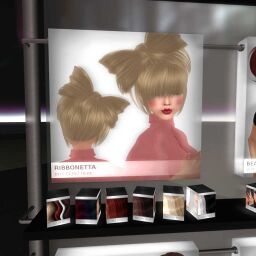Original Copy Contents
Revision as of 04:01, 13 July 2010 by Torley Linden (talk | contribs) (Configured stable versioning for Original Copy Contents: [Precedence: Quality, Default: Stable])
Should you sell your inworld Second Life creations as Original, Copy, or Contents? That depends on how the object is presented and what you intend to do, as this fast, easy, and fun video shows:
<videoflash type="youtube">y7vrq_alXsU|640|505</videoflash>
| Tip: There are more advanced ways of selling objects, such as the web-based Marketplace and scripted vendors which can help you track sales, run multiple locations, automate product updates, and more. Those are beyond the scope of this page, but feel free to link to further info in the "Also see" section below. |
Keeping in mind that this is a simple overview of what in practice has many subtleties, here are some pros and cons of each (feel free to expand this list, real examples are cool):
Original
- Sells the actual inworld object as-is. If someone buys it, they're informed they now own the object as they see it inworld.
- If they want to take it with them, they must take it into their inventory. Otherwise, it stays inworld and could be returned or lost.
- PRO: Selling originals is used with "exclusive" or "limited-edition" works of art where there are a limited number of copies. This creates an artificial scarcity that may have traditional charm for some. For example, you place five vases on a shelf, and as each one is bought, the buyer takes it off the shelf.
- PRO: This is useful for yard sales involving no-copy but transferable objects, where you're not the original creator and it's usually preferable to show objects in 3D instead of a packaged picture. Plus, the owner may have lost or discarded the original packaging.
- PRO: This is also useful if you've built a structure on someone else's land and want to sell it to them, in-place, without them having to re-rez it.
- CON: Current limitations of the system means the new owner has to buy each object, and there's no current way to set objects for sale like there is land.
- However, if you're selling one of your land parcels, there's an option to also "Sell the objects with the land."
Copy
- Sells a copy (surprisingly enough) of the object you bought. The original stays inworld, while the copy appears in your inventory.
- PRO: If the object is meant to be used as-is, you can rez it inworld. For example, you see a pretty tree inworld and you buy that.
- CON: However, if the object came in a box, you need to not only unrez it, but unpack it, also known as "opening a box" (because the container object is treated as such). For creators, there's a click action you can use so customers can left-click to open a box (which is simpler than right-clicking and using the context menu).
- CON: In many cases, you're better off selling Contents rather than Copy, because it reduces the potentially frustrating intermediary steps of opening the box. It can be hard to find somewhere to rez, not to mention the incremental time spent.
- An exception to this is if you consider packaging an important part of the experience, like if your boxes look really beautiful.
- An exception to this is if you consider packaging an important part of the experience, like if your boxes look really beautiful.
- PRO: An advantage to having the boxed copy is a backup that's more resilient to being messed up, unlike a folder which can have its contents jumbled.
- But, a creative way of dealing with that when selling Contents is to also recursively include a boxed object inside the contents. Then, you both (1) remove the need to rez a box inworld and (2) provide a backup.
Contents
- Sells what's inside the container object you bought. Appears in the recipient's inventory in a folder titled with the object's name.
- The contents are what you see when you right-click an object, choose Edit, and click the Content tab.
- PRO: Contents is often the best choice for selling what's inside wall display container objects that show a representation of what's inside instead of the actual object, unless you're confident there's an advantage otherwise. For example, a loveseat you can "try before you buy" can be sold as a Copy, but a box containing several loveseats in different colors should be sold as Contents.
Throughout all of this, walk in your customers' shoes and try the start-to-finish buying experience for yourself so you understand firsthand.
Good to know
- In a container object's contents, in addition to the actual product, you can include supplementary items. For example, notecards with "read me" info and other documentation, and a landmark back to your store so the buyer can find you again easily.

